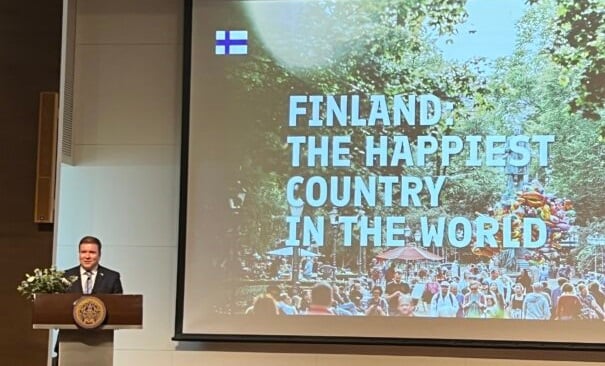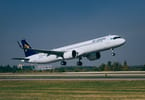HO CHI MINH CITY, Vietnam – When regional tourism ministers gathered last week for talks in the midst of masses of zipping mopeds in a bustling Ho Chi Minh City, the world economic crises was the furthest thing from their minds. That is because – fueled by growing inter-regional tourism – leaders here say that they have already moved into post-crisis mode.
“Our strategy is how to connect our countries, because connectivity is very important within the ASEAN region,” said an upbeat Thong Khon, Minister of Tourism of Cambodia, speaking of the 10-nation geopolitical and economic Association of Southeast Asian Nations (ASEAN).
“After the crisis, it turned out that the economies of Asia were not greatly affected, and at the same time our economy was growing fast.”
Three countries, one destination
The talks in Ho Chi Minh City – once known as Saigon – were held in the context of ITE HCMC, a yearly tourism-focused trade show that ended October 2. The fair was held consecutive to political meetings among regional partners featuring the tagline Cambodia, Laos, Vietnam – 3 countries – 1 destination. This year even marked the first-time presence of Myanmar to the troika.
“A lot of this had to do with the fact that tourists within the ASEAN group are now traveling more easily within the region,” he added.
So instead of talk of crisis, this group of four nations spent much of their time mulling over new flights between their countries, the easing visa restrictions, uncovering ways of exploiting water routes, and hatching investment and infrastructure plans to satisfy the demands of an increasing regional tourism.
Even Vietnam’s communist-led government was doing things a little differently. Hosting international guests in this nation’s metropolis, unusually, the first place where guests were lead was the FITO Museum – the nation’s first private museum dedicated to Vietnamese traditional medicines – medicines, which a Vietnamese official pointed out, at times treats the side effects of western drugs.
Asia Pacific region sees 14 percent increases
Symbolism aside, Khon points to world tourism growth, which is estimated to be increasing by a respectable 7 percent in the first six months of the year, with the Asia Pacific region doubling that figure with a 14 percent increase in the first 8 months of the year.
These increases are not attributable to growth in European or North American arrivals, he said, areas that are still reeling from their recessionary hits. Growth for Cambodia, rather, comes from within the Asia-Pacific region including its neighbors of Vietnam and Korea, as well as seeing steady increases of Chinese tourist arrivals.
For Cambodia, sixty percent of incoming tourists come from Asia, while only twenty percent come from Europe and the remaining ten from North America.
The famed Hindu temple complex at Angkor Wat in the Siem Reap province of Cambodia is the country’s most popular tourist destination, attracting a full half of the total foreign arrivals. Cambodia is looking to diversify its offering with alternate attractions including the development of the coastal town of Sihanoukville; a plan to link World Heritage sites in Cambodia, Thailand, and Laos; and the development of ecotourism projects.
The partner countries are also cooperating in the development of the Mekong Tourism Project, which supports developments in the Greater Mekong sub-region focusing on human resource development.
Somewhat reminiscent of the early development of the European Union, these ASEAN countries have regrouped partially as a means of repairing the damage of a one-time conflict area. The nations have initiated joint programs for tourists to flow from one country to the next seamlessly.
“Before the financial crisis, there was an agreement between our government leaders that we should cooperate in all aspects of life including the economy, investment, tourism, and culture,” said Sophong Monkhonvilay, Minister of Tourism of Laos and Chairman of the Lao National Tourism Administration.
“During wartime, these countries fought each other. In these peaceful times, we need them to visit each other and to exchange amongst ourselves.”
Backpackers and holidaymakers targeted
Laos, too, has succeeded in attracting regional tourism from countries like Thailand, Vietnam, China, Cambodia, or Myanmar. The Asia Pacific region last year represented over 90 percent of tourist arrivals to Laos. Deflecting a lack of tourism infrastructure, joint-marketing programs have attracted both backpackers and traditional holidaymakers.
“In addition to rich tourists who stay at hotels and eat at restaurants,” continued Monkhonvilay, “We also want to attract freelance tourists, too; the backpackers who come to my country and in a way distribute the income. They don’t care about the 4- or 3-star accommodations, and they eat anywhere, spending small money for the rooms at guesthouses and home stays.”
Home stay accommodations are also seen at the fair’s host, Vietnam, where outside of some main urban centers, high-quality traditional accommodations might simply not be available.
Guests of ITE HCMC at a Mekong River-focused, post-tour for instance, stayed at Ba Duc, a historic house in Cai Be on the Mekong River. Not far from a noted floating market, a handicraft village and ancient pagodas, guests here even had their turn at cooking traditional Vietnamese foods and woke up to a misty morning on the Mekong River.
While the Mekong Delta region’s beauty and simplicity were appealing, the approach and service levels demonstrated by the communist-run Vietnamese government showed that there was much to be desired in the approach of its destination marketing. Cockroach-infested busses and old-style formal meetings with communist party officials acted only as a distraction to enjoying the exotic landscapes and rich culture of Vietnam.
Foibles aside, the overriding message of ITE HCMC was that of a solid regional cooperation within the ASEAN group. “Even during the economic crisis, tourists from Europe, especially France, didn’t drop but increased slightly,” said Khon, “but they did not see the increases of Asia. Right now the movement in the Asia Pacific is bigger than Europe.”
The ASEAN Tourism Forum, the next important regional meeting, will take place in Phnom Pehn, Cambodia, between January 15-21, 2011.
www.ontheglobe.com
WHAT TO TAKE AWAY FROM THIS ARTICLE:
- Symbolism aside, Khon points to world tourism growth, which is estimated to be increasing by a respectable 7 percent in the first six months of the year, with the Asia Pacific region doubling that figure with a 14 percent increase in the first 8 months of the year.
- “Before the financial crisis, there was an agreement between our government leaders that we should cooperate in all aspects of life including the economy, investment, tourism, and culture,” said Sophong Monkhonvilay, Minister of Tourism of Laos and Chairman of the Lao National Tourism Administration.
- So instead of talk of crisis, this group of four nations spent much of their time mulling over new flights between their countries, the easing visa restrictions, uncovering ways of exploiting water routes, and hatching investment and infrastructure plans to satisfy the demands of an increasing regional tourism.






















